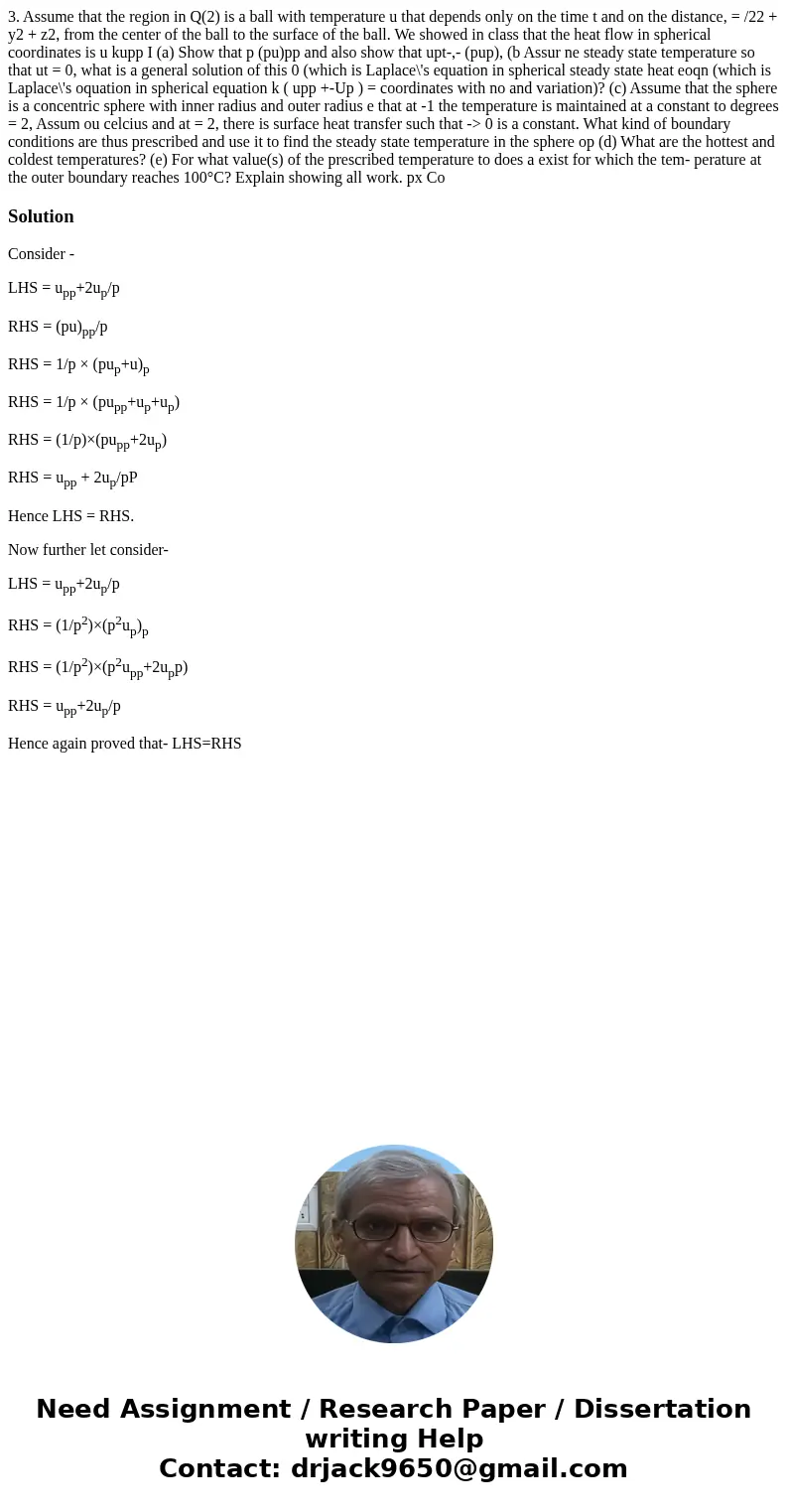3 Assume that the region in Q2 is a ball with temperature u
3. Assume that the region in Q(2) is a ball with temperature u that depends only on the time t and on the distance, = /22 + y2 + z2, from the center of the ball to the surface of the ball. We showed in class that the heat flow in spherical coordinates is u kupp I (a) Show that p (pu)pp and also show that upt-,- (pup), (b Assur ne steady state temperature so that ut = 0, what is a general solution of this 0 (which is Laplace\'s equation in spherical steady state heat eoqn (which is Laplace\'s oquation in spherical equation k ( upp +-Up ) = coordinates with no and variation)? (c) Assume that the sphere is a concentric sphere with inner radius and outer radius e that at -1 the temperature is maintained at a constant to degrees = 2, Assum ou celcius and at = 2, there is surface heat transfer such that -> 0 is a constant. What kind of boundary conditions are thus prescribed and use it to find the steady state temperature in the sphere op (d) What are the hottest and coldest temperatures? (e) For what value(s) of the prescribed temperature to does a exist for which the tem- perature at the outer boundary reaches 100°C? Explain showing all work. px Co 
Solution
Consider -
LHS = upp+2up/p
RHS = (pu)pp/p
RHS = 1/p × (pup+u)p
RHS = 1/p × (pupp+up+up)
RHS = (1/p)×(pupp+2up)
RHS = upp + 2up/pP
Hence LHS = RHS.
Now further let consider-
LHS = upp+2up/p
RHS = (1/p2)×(p2up)p
RHS = (1/p2)×(p2upp+2upp)
RHS = upp+2up/p
Hence again proved that- LHS=RHS

 Homework Sourse
Homework Sourse